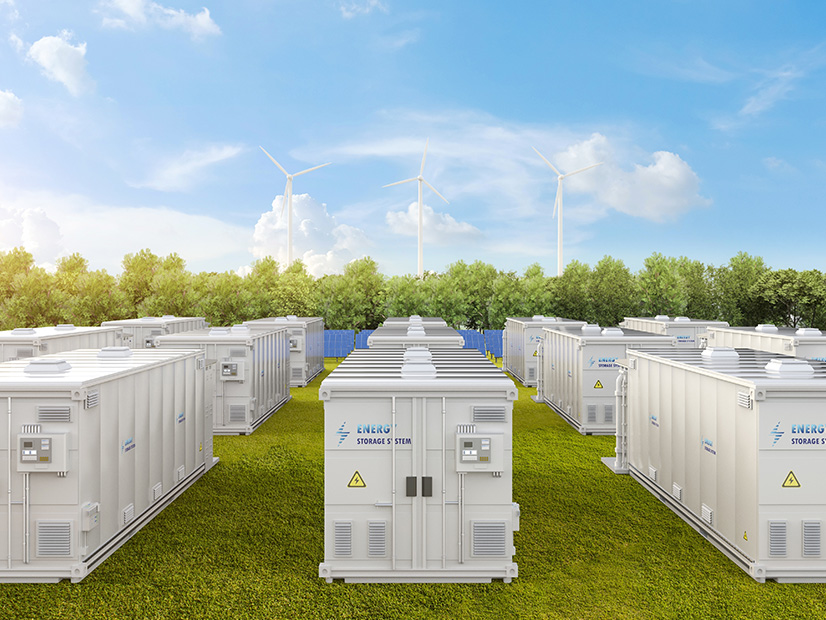ISO-NE can consider transmission-only battery storage as an option to address transmission system issues, FERC ruled Oct. 19. The commission-approved filing allows the operators of these assets to recover costs through transmission rates, while imposing tight restrictions around how the storage must be operated.
The tariff changes “will result in the selection of SATOAs [Storage as Transmission-Only Assets] only when those resources perform a transmission function, consistent with commission precedent,” FERC wrote, noting that it had approved SATOA filings for MISO in 2020 and SPP in 2023.
SATOAs will be largely prohibited from participating in ISO-NE’s markets in order to “minimize market impacts and ensure a SATOA does not receive dual recovery of its costs via both cost-of-service rates and market-based rates,” ISO-NE wrote in its filing.
To be selected as a SATOA, battery facilities must be identified as the best solution in a transmission study, connect directly to pool transmission facilities and be controlled by ISO-NE. The RTO will also limit the total capacity of SATOAs to 300 MW across the system and 30 MW per substation.
“In these circumstances, SATOAs are properly characterized as transmission assets, and the costs of a SATOA are appropriately recoverable through transmission rates,” FERC wrote.
ISO-NE’s filing was supported by a range of stakeholder groups, with some calling on the RTO to go further in enabling batteries as storage solutions. Advanced Energy United (AEU) and the Union of Concerned Scientists (UCS) both called the filing a “first step.”
“This is only a first step in expanding the capability of the transmission system through the deployment and recognition of energy storage,” wrote Michael Jacobs of UCS, adding that the organization “urges the commission to take action to further expand opportunities for storage as transmission.”
Jacobs added that storage should be included as an option to meet transmission needs identified in the interconnection process for large generators and said ISO-NE’s set of constraints “omits opportunities for economic or reliability improvements.”
Caitlin Marquis of AEU wrote that the SATOA capacity limits are “reasonable as ISO-NE gains experience and comfort with the use of storage as a transmission asset but should be evaluated over time to ensure they do not serve as an artificial and unnecessary barrier to SATOA participation.”
Marquis said SATOAs should eventually be allowed to participate in ISO-NE’s markets to tap into their full value.
“With the right guardrails in place, allowing storage to participate as both a transmission and market asset would optimize utilization of storage resources and maximize benefits to ratepayers,” Marquis wrote.
But the New England Power Generators Association (NEPGA) called the limits “critical” to ensuring that SATOAs do not result in price suppression and operational issues.
“Price suppression is a real concern,” NEPGA wrote. “When locational energy and ancillary service prices do not reflect the marginal economic cost of production, but instead are suppressed, for example, by cost-of-service resources indifferent to the economics of the market as ‘price-takers,’ the markets are less attractive to capital and thus less able to satisfy the common goal of cost-effective and efficient electric system reliability.”
In approving ISO-NE’s filing, FERC denied NEPGA’s request that the RTO’s Internal and External Market Monitors report on how effectively the SATOA limits mitigate adverse market effects. The commission said AEU’s and UCS’ calls for expanded uses for SATOAs were outside the scope of the proceeding.
FERC ordered ISO-NE, NEPOOL and New England Transmission Owners to submit the effective date of the SATOA changes, which ISO-NE did not specify in its filing.




